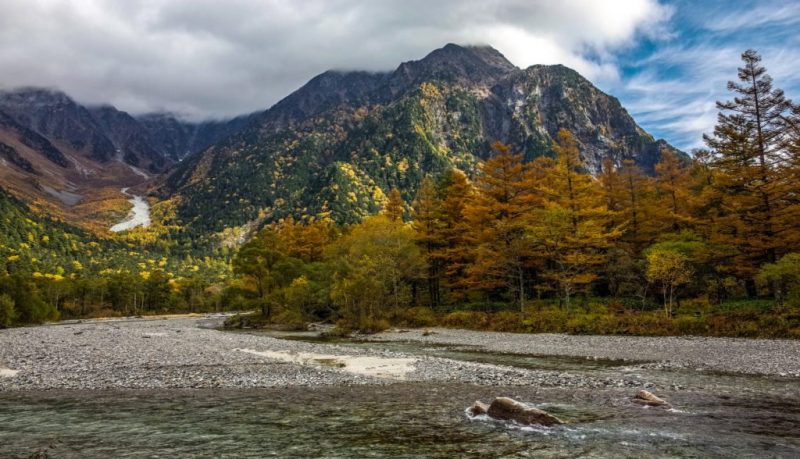The Japanese Alps are often overshadowed by Mount Fuji, which is one of Japan’s most popular tourist attractions. Mount Fuji, however, is only open for climbing two months of the year and is done so by thousands of people every day that it is open. For the truly intrepid, the Japanese Alps remain the most exciting prospect. They offer more challenging hikes, cheaper prices, and often better scenery than Fuji itself. They are also the perfect place to escape the 21st Century’s obsession with Honshu (the main island of Japan). There is skiing, onsens, and unmissable natural landscapes everywhere you look.
What and Where Are the Japanese Alps?

The name ‘Japanese Alps’ is a little misleading as it refers to three separate mountain ranges in the center of Honshu island. The term was first used by Englishman William Gowland to describe the northernmost Hida mountains. It was later misinterpreted by his fellow countryman, Walter Weston, as incorporating the Kiso and Akaishi mountains as well.
To locate the Japanese Alps on a map, start by looking at a map of Japan. There, you’ll see a startling lack of towns and cities within the triangle appearing between Tokyo, Nagoya, and Kanazawa. This is because it is almost entirely made up of mountains, stretching from Toyama Bay in the north to Hamamatsu and the Pacific Ocean in the south. The Hida Mountains / Northern Japanese Alps are composed mostly of the Chubu Sangaku National Park. It is arguably the most popular area of all because it has some of the highest peaks in the country. The Southern Alps/ Akaishi Mountains are almost as big and border Mt Fuji. Sandwiched in between are the Kiso Mountains or the Central Alps as they’re known. Though not as large, they are nevertheless home to some of the country’s busiest ski resorts.

What To Do?
The two most obvious activities in the region are the Japanese Alps hiking and skiing. But, because of the sheer size of these mountain ranges, there are countless different experiences and adventures to have. Chubu Sangaku National Park, particularly the area between the towns of Takayama and Matsumoto, is the most popular and accessible region.
Within the National Park, Kamikochi is almost a perfect microcosm of the Japanese Alps. In that vein, it is regarded as the gateway to Japan’s largest mountain ranges. At 1500m, Kamikochi is high enough to offer a perfect vantage point of the picture-perfect scenery that surrounds it. The area has several hotels, restaurants, and campsites. These provide a great base for hiking through forests, catching a glimpse of wild macaques, or climbing mountains like the spectacular Yakedake. Other highlights within the Hida mountains include the crazy Alpine route that encompasses all manner of transportation, the Kurobe Gorge, and the Hakuba ski resort.
The Kiso Mountains contain the Komagatake Ropeway which provides unbeatable access to Mt Kisokoma, the highest in the region. Finally, the Akaishi Mountains which are the most southerly, are home to ten of Japan’s ‘100 Most Famous’ mountains as well as the elusive Japanese serow.

How To Visit the Japanese Alps
To visit the Kiso and Akaishi ranges, it’s best to choose one particular mountain or ski resort and go from there. The Hida area, however, is more accessible because of its close proximity to some large cities, particularly Matsumoto. Also, its better-developed tourist infrastructure makes it an easier option for those wanting to sample the Japanese Alps.
The area does require a slightly higher budget than elsewhere in the country unless you’re willing to camp. Regardless, Kamikochi is a must-see on any Alpine itinerary and it alone deserves two days of your time.














